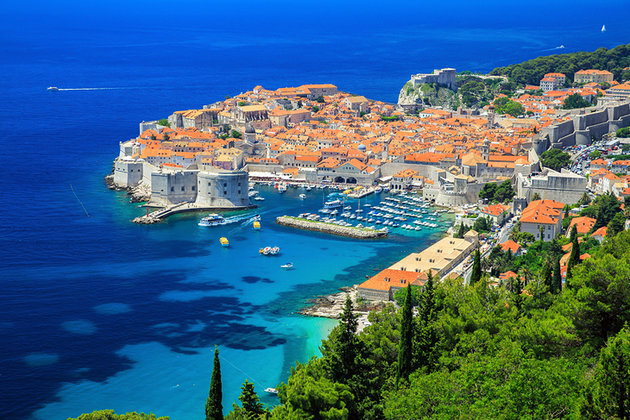- Home
- About Us
- Tel : +91 33 4022 9591
DUBROVNIKView all the popular packagesOffers
2 Popular Packege(s)
Area 21.35 Square Kilometers
Population 0.04 Million
Winter Temperature 10°C
Summer Temperature 26°C
Best Time To Visit September and October
DUBROVNIK BY FLIGHT

Dubrovnik airport (IATA: DBV) is located about 20km to the south of the city.
The following airlines operate services to/from Dubrovnik Airport:
Aer Lingus (Dublin-seasonal), Aeroflot (Moscow - seasonal), Air Berlin (Munich-seasonal, Stuttgart-seasonal), Austrian Airlines (Vienna), B&H Airlines (Sarajevo-seasonal), Blue1 (Helsinki), Bmibaby (East Midlands-seasonal), British Airways (London-Gatwick), Croatia Airlines (Amsterdam, Athens, Belgrade-seasonal, Düsseldorf, Frankfurt, London-Gatwick, Munich, Paris-Charles de Gaulle, Pula, Rome-Fiumicino, Split, Tel Aviv, Vienna, Zagreb, Zürich), DanubeWings (Bratislava), EasyJet (Berlin-Schönefeld-seasonal), Geneva-seasonal, Liverpool-seasonal, London-Gatwick-seasonal, Milan-Malpensa-seasonal, Paris-Orly-seasonal), Estonian Air (Tallinn), Flybe (Birmingham-seasonal, Exeter-seasonal, Southampton-seasonal), Germanwings (Berlin-Schönefeld, Cologne/Bonn, Hamburg), Iberia Airlines (Madrid-seasonal), Iberia operated by Air Nostrum (Valencia-seasonal), Israir (Tel Aviv - seasonal), Jetairfly (Brussels-seasonal), Jet2.com (Belfast-seasonal, Edinburgh-seasonal, Leeds-seasonal, Manchester-seasonal), Lufthansa (Munich), Luxair (Luxembourg), Monarch Airlines (London-Gatwick-seasonal)Birmingham-seasonal Manchester-seasonal, Norwegian Air Shuttle (Bergen, London Gatwick, Madrid, Oslo-Gardermoen, Stavanger, Stockholm-Arlanda, Helsinki, Trondheim, Warsaw), SmartWings (Prague-seasonal), Tarom (Bucharest - Henri Coanda Airport, seasonal), Thomson Airways (London-Gatwick, London-Luton, Manchester-seasonal), Turkish Airlines (Istanbul), Vueling (Barcelona-seasonal), Wizzair (London-Luton)
DUBROVNIK BY TRAIN

There is no train to Dubrovnik. The closest rail station is Split, a 4 hr bus ride from Dubrovnik. From there you can take one of the 2 tilting-trains (ICN) to Zagreb. In the Summer-months 2 Nighttrain link Split with the rest of Croatia (one to Zagreb-Osijek and one to Zagreb-Siófok-Budapest)
DUBROVNIK BY LAND

BY CAR:
The trip from Split along the coastal road (Jadranska magistrala or D8) is a beautiful scenic journey through small, quaint villages and other tourist destinations. Just know that in the summer months the trip is likely to take several hours longer than anticipated. What looks like a short trip on a map can take 6h.
A much faster way of simply getting from Split to Dubrovnik by car is to take the A1 highway to Vrgorac and then continue via Staševica, Opuzen and Neum to Dubrovnik.
By bus
The main bus station is in Kantafig, near Port Gruz and the Tudjman bridge, 2.5km northwest of the Old Town. Local bus 7 operates between this station and Babin kuk, and bus 1abc or 3 serves Old Town (12 kuna in advance, 15 from driver).
DUBROVNIK BY FERRY
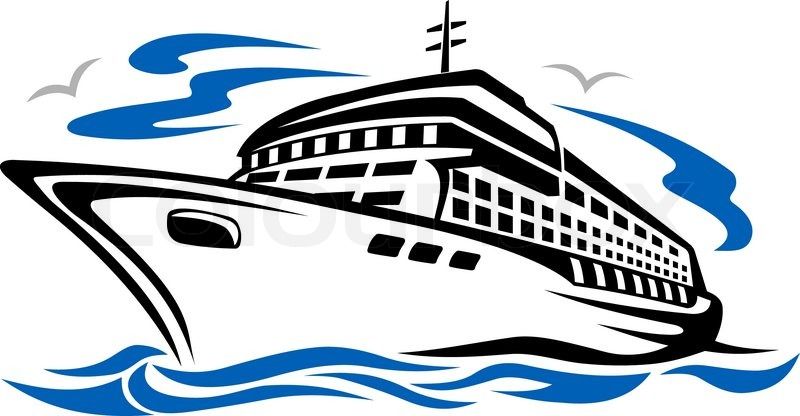
Many cruise ships come to this port of call, typically docking at the Port of Dubrovnik (Port Gruz) across from the main bus station, 2.5km northwest of the walled old town. The easiest and cheapest way to get from the main bus station to the Old Town is by using the local buses number 1, 1A, 1B, and 3, which circulate almost constantly and cost 15 kunas one way (12 kunas if you buy the bus ticket before boarding).
DUBROVNIK CITY SIGHTSEEING
Dubbed the "Pearl of the Adriatic," beautiful Dubrovnik offers a wealth of attractions for visitors. Famous for its spectacular seafront location on the Dalmatian coast coupled with its evocative and historic old city center, Dubrovnik was founded in the 7th century and has been ruled through the centuries by the Venetians and the Hungarians, each of which have left their mark. The city enjoyed its greatest growth in the 15th and 16th centuries, a fact reflected in the impressive architecture and its designation as a UNESCO World Heritage Site. Home to Croatia's artistic and intellectual elite, Dubrovnik offers numerous cultural activities and festivals. Highlights of a visit include walking around its picturesque old streets and alleys while visiting such excellent attractions as its splendid cathedral and treasury, the broad Stradun pedestrian walkway, and its many fine old palaces and fortifications.
The Old City Walls

The old city walls of Dubrovnik are one its best-known features. Built in the 10th century and modified in the 13th and 14th centuries, these formidable walls - as high as six meters and up to six meters thick-provided a solid defense against invaders. Totaling nearly two kilometers in length, Dubrovnik's city walls make a great spot for a casual stroll and offer numerous excellent views over the Adriatic and inwards over the old city center. Other highlights include its two towers, the Minceta Tower and the Bokar Tower, along with two forts, the Lovrjenac Fort and the Revelin Fort. Access to the walls is through the main entrance on the left of Pile Gate (admission is charged)
Stradun of Dubrovnik
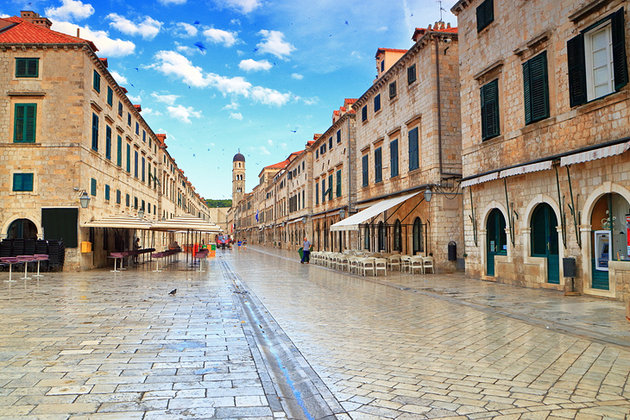
The spectacular Stradun is a place where locals and visitors alike gather day and night to watch the world drift by. Undoubtedly one of Europe's most picturesque pedestrian thoroughfares, the Stradun boasts many cafés and restaurants and is a good spot to rest weary feet after a day touring Dubrovnik. Measuring 300 meters in length and famous for its white limestone paving, the street dates back to 1468, although many of the surrounding buildings were built in the 17th century after the devastating earthquake of 1667, when most of Dubrovnik was heavily damaged. The Stradun's unique homes are designed to enable residential living upstairs and business activities on the main level, and are notable for having their main doors and windows under the same arch.
Dubrovnik Cathedral and Treasury
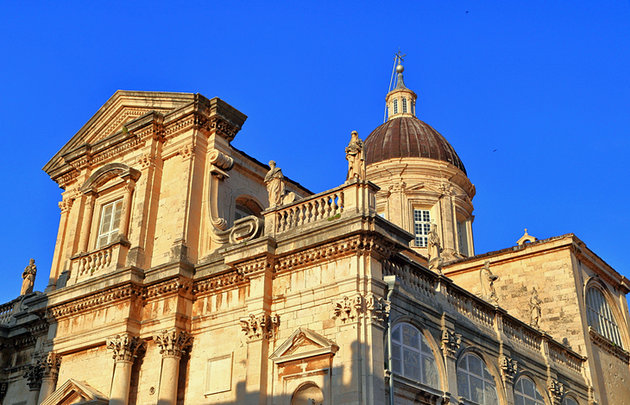
Standing on the site of an older cathedral dating from the 6th century and destroyed by earthquakes, beautiful Dubrovnik Cathedral-also referred to as the Assumption Cathedral (its full name is the Cathedral of the Assumption of the Virgin Mary)-was designed in Baroque style by Andrea Buffalini of Rome. Notable for its three aisles, three apses, and splendid interior décor, the cathedral includes highlights such as paintings by Italian and Dalmatian artists from the 16th to 18th centuries, including Virgin of the Chair by Raphael from the early 1600s. A must see is the cathedral treasury with its many important relics, the most famous being a portion of the cross that Jesus is thought to have been crucified upon. Other famous relics include the head, leg, and arm of St. Blaise, dating from the 13th century, as well as a splendid display of 138 gold and silver reliquaries from around the world.
The City Gates
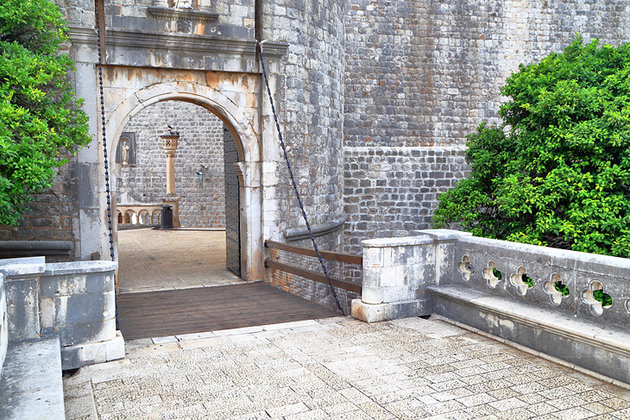
For centuries, Dubrovnik's famous Pile Gate has served as the main entrance and is still the most interesting access point to this fabulous old city. Formerly surrounded by a moat complete with a drawbridge built in 1537, the pedestrian-only Pile Gate - one of two entrances to the Lapad area - also boasts a pleasant garden in the old moat. Other highlights include a statue of St. Blaise located in a niche in the arch and carved by famous Croatian artist Ivan MeÅ¡trović, and, within the ramparts, a door dating back to 1460. Another gate worth seeing is the 14th-century Ploce Gate, just behind the Asimov Tower and designed as a "double defense" system that proved effective in times of trouble. Also imposing and located just across the moat from the Ploce Gate is the Revelin Fort, designed by Tvrđava Revelin in 1580
Fort Lovrijenac
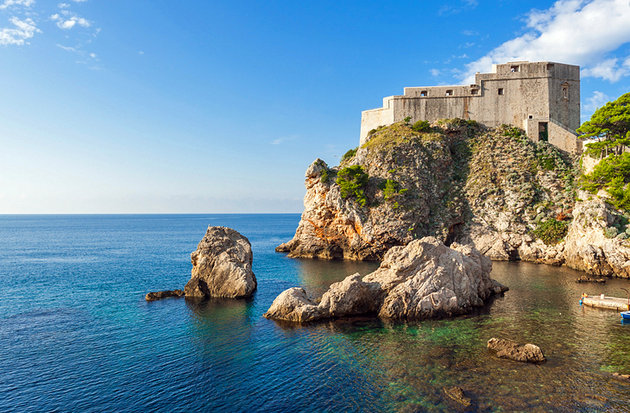
Dubbed "Dubrovnik's Gibraltar" for its location on a rocky promontory just outside the city's western wall, Fort Lovrijenac has long been one of Croatia's most important fortresses. Rising an impressive 37 meters above the Adriatic, this stunning fortress proved impregnable during the many sieges undertaken by the Venetians from its completion in the 11th century onwards (legend has it the Venetians themselves planned to build a fort here but were beaten to it by industrious city folk). Also notable for its unusual triangular layout with its three terraces, Fort Lovrijenac - also known as Fort Lawrence - is accessed via two drawbridges and a gateway through its impressive walls, as thick as 12 meters in places. In addition to serving as a tourist attraction, the fort is also used as a venue and backdrop for Dubrovnik's famous Summer Festival and its many theatrical and musical performances.
The Rector's Palace and Cultural Historical Museum
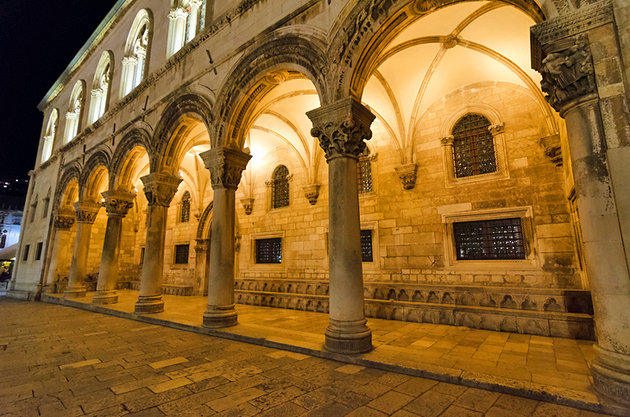
Designed by Onofrio de la Cava in 1435, the Rector's Palace, now home to the city's Cultural Historical Museum, has been much altered through the centuries. A beautiful mix of late Gothic and early Renaissance styles, this splendid old palace was heavily damaged by a gunpowder explosion not long after its completion, later by a fire, and then again in 1667 when an earthquake struck. These days, this well-preserved building is a delight to explore, particularly its pleasant central courtyard (try to time your visit to coincide with one of its regular summer classical music performances). Also of interest is the bust of Miho Pracat, a former merchant from the island of Lopud. Highlights of the museum's collection of 15,000 pieces include many interesting exhibits detailing life in the Republic of Ragusa during medieval times, as well as numerous fine paintings by Venetian and Dalmatian artists.
The Fort of St. John

On the eastern edge of the old town is the Fort of St. John, known to locals as the Fort of St. Ivan. Once an important part of Dubrovnik's defenses, this imposing structure now houses several modern attractions to keep visitors entertained. In the upper area is the Maritime Museum of Dubrovnik featuring displays of Dubrovnik's maritime past illustrated through model boats and naval artifacts, while the lower area contains the Aquarium of Dubrovnik with its many interesting displays of local and exotic fish, as well as a superb collection of seahorses. Also worth a visit is nearby Bokar Fort, designed and built by Michelozzo di Bartolomeo Michelozzi and a great spot to visit for its excellent views over the city and the Adriatic.
SHOPPING IN DUBROVNIK
The Old Town is the place to go shopping, however, most of the offers are geared towards the tourist trade. Small shops can be found around Stradun, but the streets north and south offer more variety.
Outside the walls, shops are scattered around town with no big mall to gather them in one place. Small shopping centres such as Pemo, Tommy, Mercante and Downtown can be found in the business area of Gruž (a 10 minute walk south of the main bus terminal), as well as in Lapad in the so called âDOCâ centre. These centres also include bigger grocery shops, usually located on the ground floor with a variety of domestic and foreign assortments. Shops in Dubrovnik are generally open from 8am to 9 pm, sometimes limited during winter months. Most shops open seven days a week.
As everywhere in Croatia, don't miss a chance to buy fresh food from farmers on open-air markets or fresh fish directly from fishermen on fish markets.
Maria Boutique
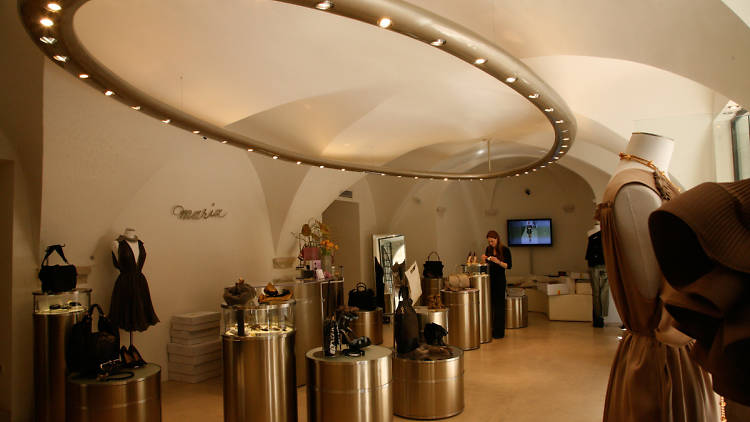
Now visitors to Dubrovnik need no longer panic when invited to a VIP party at short notice. Maria describes itself as a concept store but fashion is the focus here. Strategically located at the Ploče Gate, it's one of the few places in Croatia where you can find a battery of major international names such as Givenchy,
Algoritam

If you've lost, forgotten or galloped through your holiday reads quicker than anticipated, this bookshop is a boon. Half the store is dedicated to English-language publications: from travel guides to bestsellers, classics to heavyweight volumes on politics, history, art and design. Also has an impressive stock of two dozen (pricy) English magazines (Q, Arena, Vogue), postcards, CDs and glossy photographic album histories of Dubrovnik.
Dubrovačka kuća
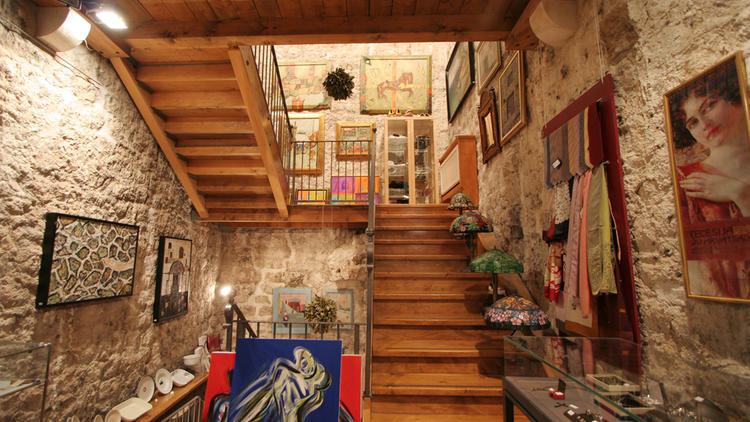
High-quality treats here include local spirits, sweets, posters, olive oils, regional wines and bath salts. A link with the Museum of Arts and Crafts in Zagreb means beautiful ceramics and glassware at affordable prices.
INDIAN RESTAURANTS IN DUBROVNIK

Below are some of the Indian Restaurants in Dubrovnik:
1. Incredible India
2. Tajmahal Dubrovnik
3. Magic Indian Restaurant

